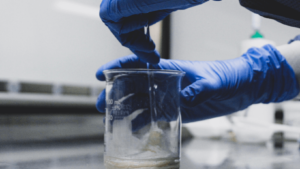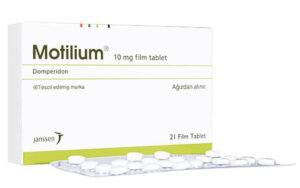 It’s no secret that some, even many, lines of prescribed medication supply have encountered bottlenecks and breakdowns recently. This has led to shortages at the distribution point and caused many pharmacists to disappoint their patients holding the prescriptions unless the pharmacy has facilities to dispense compounded medications.
The problem was reported to Congress in May 2023, when an investigation by the Department of Health and Human Services reported that “prescription drug shortages are an ongoing concern in the US.”
The report highlights some of the most impactful effects of drug shortages:
It’s no secret that some, even many, lines of prescribed medication supply have encountered bottlenecks and breakdowns recently. This has led to shortages at the distribution point and caused many pharmacists to disappoint their patients holding the prescriptions unless the pharmacy has facilities to dispense compounded medications.
The problem was reported to Congress in May 2023, when an investigation by the Department of Health and Human Services reported that “prescription drug shortages are an ongoing concern in the US.”
The report highlights some of the most impactful effects of drug shortages:
- Consumers in older age brackets are significantly affected by drug shortages. Two-thirds of those that suffered a failure in the supply of their drugs were 45 and older.
- Drug shortages leave consumers unable to fill their prescriptions. The prescription was often never filled, even after supplies were restored. The study found a decline in sales volume of between 28% and 35% year-on-year after a drug shortage was corrected.
- Drug shortages have led to higher prices, especially for generic substitutes. The data showed a 16% increase in the prices of the generic alternatives to drugs in shortage.
How compounding pharmacies went out of the picture
Back in the earlier half of the twentieth century, people would have been quite familiar with the concept of a pharmacist (or druggist, or even apothecary) that filled out prescriptions by mixing ingredients from a large store of raw chemicals and compounds in the back and dispensed compounded medications. Fast forward to the present, and most pharmacies only have shelves from which they draw manufactured and packaged drugs, pretty much the same way that supermarket shelves carry dry goods. In this scenario, the pharmacist fills a prescription by pulling the relevant bottle or box off the shelf and giving appropriate instructions and guidance to the customer. But given the widespread shortages of many essential prescription drugs, compounding pharmacies can play a different role by fulfilling prescriptions like apothecaries did years ago – by mixing ingredients to match the specific requirement set out in a prescription.The evolution from compounding to retail pharmacies
 The switch from apothecaries to modern pharmacies mirrors the general economic revolution. In earlier times, a local apothecary was a staple of the community. They were responsible not only for distributing prescribed medicine but also for its production. Druggists of the early 20th century were essential members of their communities, offering a crucial service with a personalized touch. Each prescription was meticulously prepared on-site, often with raw ingredients found only on the apothecary’s shelves. These professionals had a deep knowledge of botanical and mineral substances, carefully combining these in the precise mixtures needed to produce the required remedies. The relationship between druggists and their customers was grounded in trust and personal understanding.
Today, there is primarily a standardized, supply-driven model in modern pharmacies. This shift reveals significant changes in healthcare practices, manufacturing advances, and new social norms. It came parallel to the shift from corner grocery stores and retail shops on the street level to supermarkets and chain stores in giant malls.
Scientific advances, especially in medicine, played a pivotal role in drug production and distribution evolution throughout the 20th century. It produced a convergence of several streams, including advancements in treatments with drugs, changes in legislation, and shifts in public health services. As the application of drugs burgeoned, the focus was on developing and testing drugs, necessitating the features of mass production.
The legislation also contributed to this transformation, passing key laws that impose stricter control on the manufacture and sale of drugs. These laws propelled the pharmaceutical industry towards mass production, gradually reducing the role of the local apothecary in the process.
Some other more significant social shifts drove the change toward modern pharmacies. Urbanization and the rise of consumerism favored convenience and accessibility over personal interaction. Doctors increasingly relied on the medications produced by “big pharma” because they felt their patients would benefit from the greater consistency in dosage and efficacy. Depending on the individual apothecary’s skills and ingredients, locally compounded drugs could vary in strength and quality.
Standardized medications eliminated variability, providing doctors and patients with reliable treatments and predictable outcomes. Large-scale drug production also made medications more affordable, with increased availability. This made it easier for doctors to prescribe medications and patients to obtain them, improving the overall healthcare delivery system. The drug companies also promoted their products directly to doctors, providing extensive information about their products. This commercial influence should be considered in understanding why doctors transitioned to pre-packaged medications.
The switch from apothecaries to modern pharmacies mirrors the general economic revolution. In earlier times, a local apothecary was a staple of the community. They were responsible not only for distributing prescribed medicine but also for its production. Druggists of the early 20th century were essential members of their communities, offering a crucial service with a personalized touch. Each prescription was meticulously prepared on-site, often with raw ingredients found only on the apothecary’s shelves. These professionals had a deep knowledge of botanical and mineral substances, carefully combining these in the precise mixtures needed to produce the required remedies. The relationship between druggists and their customers was grounded in trust and personal understanding.
Today, there is primarily a standardized, supply-driven model in modern pharmacies. This shift reveals significant changes in healthcare practices, manufacturing advances, and new social norms. It came parallel to the shift from corner grocery stores and retail shops on the street level to supermarkets and chain stores in giant malls.
Scientific advances, especially in medicine, played a pivotal role in drug production and distribution evolution throughout the 20th century. It produced a convergence of several streams, including advancements in treatments with drugs, changes in legislation, and shifts in public health services. As the application of drugs burgeoned, the focus was on developing and testing drugs, necessitating the features of mass production.
The legislation also contributed to this transformation, passing key laws that impose stricter control on the manufacture and sale of drugs. These laws propelled the pharmaceutical industry towards mass production, gradually reducing the role of the local apothecary in the process.
Some other more significant social shifts drove the change toward modern pharmacies. Urbanization and the rise of consumerism favored convenience and accessibility over personal interaction. Doctors increasingly relied on the medications produced by “big pharma” because they felt their patients would benefit from the greater consistency in dosage and efficacy. Depending on the individual apothecary’s skills and ingredients, locally compounded drugs could vary in strength and quality.
Standardized medications eliminated variability, providing doctors and patients with reliable treatments and predictable outcomes. Large-scale drug production also made medications more affordable, with increased availability. This made it easier for doctors to prescribe medications and patients to obtain them, improving the overall healthcare delivery system. The drug companies also promoted their products directly to doctors, providing extensive information about their products. This commercial influence should be considered in understanding why doctors transitioned to pre-packaged medications.
Welcoming back compounding pharmacies
 Modern pharmacies of the 21st century represent a fundamentally different model compared to those from 100 or even 50 years ago. Today’s pharmacists, while still knowledgeable health professionals, are primarily dispensers of packaged medications. This evolution undeniably enhanced the accessibility and consistency of drug quality. Drug stores have also broadened their range to offer medications and a wide variety of health and wellness products.
The switch from the personalized, hands-on practice of compounding pharmacists to the standardized, supply-driven model of modern pharmacies is a testament to the impact of technological advancements, legal frameworks, and social changes on healthcare. However, before getting lost in appreciation for the convenience and efficiency of the change to retail drug stores, it’s worthwhile remembering that the craftsmanship and holistic approach of compounding pharmacies, supplying personalized care, still has a great deal going for it in connection to addressing the problems of drug shortages.
Modern pharmacies of the 21st century represent a fundamentally different model compared to those from 100 or even 50 years ago. Today’s pharmacists, while still knowledgeable health professionals, are primarily dispensers of packaged medications. This evolution undeniably enhanced the accessibility and consistency of drug quality. Drug stores have also broadened their range to offer medications and a wide variety of health and wellness products.
The switch from the personalized, hands-on practice of compounding pharmacists to the standardized, supply-driven model of modern pharmacies is a testament to the impact of technological advancements, legal frameworks, and social changes on healthcare. However, before getting lost in appreciation for the convenience and efficiency of the change to retail drug stores, it’s worthwhile remembering that the craftsmanship and holistic approach of compounding pharmacies, supplying personalized care, still has a great deal going for it in connection to addressing the problems of drug shortages.
















